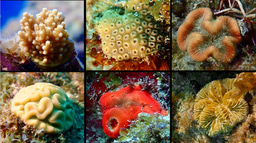Soft Robots Getting Under Your Skin: Transforming Healthcare from Heart Patches to Smart Pills.
Published in Bioengineering & Biotechnology

Here, science fiction meets reality at the cutting edge of medical technology. Our group of researchers has created these skin-inspired sensory robots that could revolutionize the field of medical implants. Inspired by the way muscles and sensory skins naturally integrate in animals, these soft, biocompatible robots are made to precisely carry out a variety of medical tasks. Imagine a robot that is soft and nimble rather than stiff and rigid --- almost like an internal assistant or second skin that can change and adapt as needed.
Our team looked to the cohesive integration of skeletal muscles and sensory skins in vertebrate animals. We have applied this harmonious relationship into the robotic designs to enable smooth movement and perception. These robots are primarily composed of an artificial muscle and electronic skin (e-skin), which are intended to resemble the inherent characteristics of human tissues. With its array of sensors, the e-skin can detect essential vital signs ranging from temperature to pressure, and its artificial muscles can react to outside stimuli by contracting and relaxing.
Some of the notable creations:
- Ingestible robots for digestive system are small devices that can be swallowed and are designed to expand in the stomach. They are capable of long-term drug delivery, pH level monitoring, and gastrointestinal health monitoring. We can use this innovation for long-term illnesses like Crohn’s disease.
- The robotic cuff for vascular system is a continuous blood pressure monitor that can be wrapped around a blood vessel. Because of its unique self-wrapping design, it can accurately measure a vessel without extensive surgical procedures.
- The cardiac patch robot for epicardial interface is a flexible patch that sticks to the heart’s surface to monitor cardiac activity and deliver medication exactly where it is needed. This could revolutionize the way heart diseases are treated by enabling real-time monitoring and reaction to cardiac events.
- Robotic Grippers for bladder control are designed to help patients with bladder dysfunctions. These grippers can stimulate and adjust the bladder to help with regular function, which offers a potential solution for people suffering from incontinence.

Figure 1. Diagram illustrating the use of bio-inspired sensory robots as minimally intrusive intelligent implants for medication delivery, diagnosis, and stimulation.
Our team faced hard challenges in determining the optimal pattern for each creation, particularly the robotic cuff for vascular system. The initial pattern we designed was not sturdy enough to maintain its curl around the tubes. After applying the PNIPAM hydrogel to the cuff pattern, the e-skin became too soft to support the weight of the hydrogel, causing it to stick the tube. After multiple redesigns, our researchers finally developed an ideal pattern that not only stays curled around tubes but also supports the weight of the hydrogel. The key to this design is the placement of sensors at both ends and in the middle, with hollowed-out bridge connecting them. This configuration allows the sensors to detect blood vessels and enables the e-skin with hydrogel to flex through the hollow sections.
Each robot is crafted using cutting-edge materials that emulate the suppleness and flexibility of biological tissues. Because they are compatible with human tissues, materials like hydrogels and polymers are used in the construction of the robots so that they can function inside the body without causing discomfort or rejection. The fabrication techniques are inspired by biological processes, which employ solution-based techniques to integrate sensors and actuators into the polymer matrices that make up the robot’s skin. The e-skin can now process data in real time and be extremely sensitive.
Hydrogels are the material choice that is fundamental to bio-inspired soft robotics because of their inherent properties that mimic those of living tissues. Hydrogels are incredibly soft and flexible, yet mechanically strong networks of hydrophilic polymer chains that can hold a lot of water. Hydrogels are perfect for interacting with human organs and tissues because of their moisture content and softness, which are similar to biological tissues.
The key characteristics of hydrogel is its biocompatibility, flexibility and elasticity, and permeability. Because hydrogels are so well suited to biological settings, there is reducing risk of immune rejection. This is crucial for implants or other devices that need to be permanently integrated with the body’s tissues. Hydrogel’s physical characteristics can be precisely adjusted to match various body tissues. This includes imitating the elastic properties of human muscles and skin, they can stretch, compress, and revert to their original shape without undergoing irreversible deformation. Gas and nutrient permeability are also a critical property of hydrogels for any application involving cellular interactions. This keeps the integration of tissues in a healthy state by enabling cells to take in nutrients and oxygen while also getting rid of metabolic waste.

Figure 2. Hydrogel flexibility and elasticity on chicken drumsticks and human hands.
Hydrogels have a unique scent due to its chemical composition. The hydrogel used in this article is PNIPAM hydrogel, which is made of NIPAM (N-isopropylacrylamide), TEMED (N,N,N’,N’ – Tetramethylethylenediamine), APS (Ammonium persulfate), and BIS (N,N’ – Methylenebisacrylamide). TEMED has a strong and fishy odor, and the scent stays on people’s hands and clothes for several days. At first, our group of researchers had to hold their breath and wear masks to tolerate the smell, but over time, due to prolonged exposure to the odor, our group of researchers could no longer perceive it. There were several days when I went back home after dealing with hydrogel for hours, and my roommate can smell the odor immediately as I stepped in the house. I lifted my sleeve, sniffed carefully, and said, “It does not smell like anything, does it?”
The creation of bio-inspired soft robots, which skillfully combine cutting-edge engineering and biology, represents a critical turning point in medical technology. These robots, which are based on biological systems found in nature, present exciting new possibilities for medical diagnosis and treatment, reducing the need for invasive procedures and increasing their effectiveness. These flexible, sensitive devices have the potential to transform personalized medicine and enhance patient outcomes as research advances. In the future, we hope the combination of soft robotics and healthcare will usher in a new phase of medical intervention in which nature and technology will work together to heal.
Reference
Zhang, L. et al. (2024, June 5). Skin-inspired, sensory robots for electronic implants. Nature News. https://www.nature.com/articles/s41467-024-48903-z
Follow the Topic
-
Nature Communications

An open access, multidisciplinary journal dedicated to publishing high-quality research in all areas of the biological, health, physical, chemical and Earth sciences.
Related Collections
With Collections, you can get published faster and increase your visibility.
Clinical trials 2025
Publishing Model: Open Access
Deadline: Dec 31, 2025
Women's Health
Publishing Model: Hybrid
Deadline: Ongoing






Please sign in or register for FREE
If you are a registered user on Research Communities by Springer Nature, please sign in